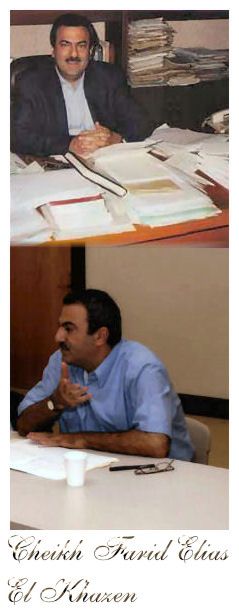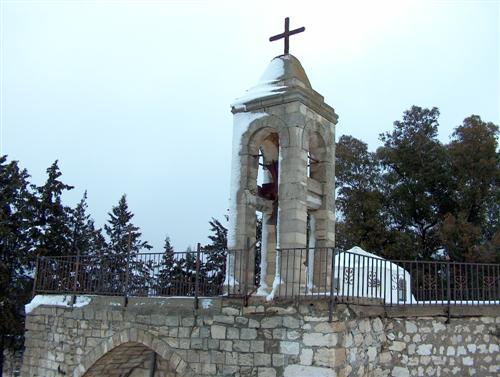* Other smaller parties are active, including three Armenian parties. ** Hizballah was unofficially founded in 1982. TABLE 2:
TABLE 3: Parties in Parliament by Sect (1972-2000)
(1.) For a comprehensive work on political parties in prewar Lebanon, see Michael W. Suleiman, Political Parties in Lebanon, The Challenge of a Fragmented Political Culture (Ithaca: Cornell University Press, 1967). (2.) See Shawqat Salim Shtai, Al-Shuyu 'iyun wa al-Kata 'ib: Tajribat al-Tarbiya al-Hizbiyya fi Lubnan [The Communists and the Kata 'ib: The Experience of Party Education in Lebanon] (Beirut: Mu'assassat al-Intishar al-'Arabi, 1997), pp. 475-498. (3.) See, for example, Giovanni Sartori, Parties and Party Systems: A Framework for Analysis, Vol. I (Cambridge: Cambridge University Press, 1976); Alan Ware, Political Parties and Party Systems (Oxford: Oxford University Press, 1996). (4.) On the Kata'ib Party, see John P. Entelis, Pluralism and Party Transformation in Lebanon: AlKata'ib 1936-1970 (Leiden: E.J. Brill, 1974); Frank Stoakes, "The Supervigilantes: The Lebanese Kataeb Party as Builder, Surrogate and Defender of the State" Middle Eastern Studies, 11 (October 1975): pp. 215-236. On the Progressive Socialist Party, see Nazih Richani, Dilemmas of Democracy and Political Change in Sectarian Societies: The Case of the Progressive Socialist Party 1949-1996 (New York: St. Martin's Press, 1998); on the SSNP, see Labib Zuwiyya Yamak, The Syrian Social Nationalist party, An Ideological Analysis (Cambridge: Harvard University Press, 1966). (5.) See Fares Shtai, Al-Hizb al- Taqaaddumi al-Ishtiraki 1949-1975 [The Progressive Socialist Party 1949-1975], 2 vols. (Al-Mukhtara: Al-Dar al- Taqaddumiyya, 1989). (6.) See Augustus Richard Norton, Amal and The Shia: Struggle for the Soul of Lebanon (Austin: University of Texas Press, 1987); Fouad Ajami, The Vanished Imam: Musa al-Sadr and the Shia of Lebanon (Ithaca: Cornell University Press, 1986). (7.) Maurice Duverger, Les Partis Politiques [Political Parties] (Paris: Librairie Armand Colin, 1961): 322-332. (8.) On the concepts of Greater Syria, see Daniel Pipes, Greater Syria: The History of an Ambition (New York: Oxford University Press, 1990). (9.) See Eyal Zisser, Lebanon: The Challenge of Independence (London: I.B. Tauris, 2000), pp. 1-40. (10.) See Farid el Khazen, The Breakdown of the State in Lebanon 1967-1976 (Cambridge: Harvard University Press, 2000): pp. 73-86. (11.) See Walid Nuwayhid, "Naqd al-Hizb al-Suri al-Qawmi al-Ijtima 'i" ["Critique of the SSNP"], Dirasat 'Arabiyya No. 7 (May 1973): 32-54, and 'Abdullah Sa'adeh, Awraq Qawmiyya, Mudhakarat al-Duktur 'Abdullah Sa'ada [Nationalist Papers: The Memoirs of Dr. 'Abdullah Sa'adeh]. (12.) See John Donohue, "Conflit a l'Universite Americaine de Beyrouth", ["Conflict at AUB"] Travaux et Jours (April-June 1971): pp. 101-113. (13.) On the war years, see Theodor Hanf, Coexistence in Wartime Lebanon, Decline of a State and Rise of a Nation (London: The Centre For Lebanese Studies and I.B. Tauris, 1993). (14.) See As'ad Abu Khalil, "Druze, Sunni and Shiite Political Leadership in Present-Day Lebanon," Arab Studies Quarterly Vol. 7, (Fall 1985), pp. 28-58; Lewis Snider, "The Lebanese Forces: Their Origins and Role in Lebanon's Politics", Middle East Journal, Vol. 38, No. 1 (Winter 1984), pp. 1-33. (15.) Joseph Abu Khalil, Qissat al-Mawarina fi al-Harb, Sira Dhatiyya [The Story of the Maronites in the War: A Personal Account] (Beirut: Sharikat al-Matbu'at li'l-Tawzi' wa al-Nashr, 1990): 365-404. (16.) See Waddah Sharara, Dawlat Hizballah, Ladman Mujtama'an Islamiyyan [Hizballah's State: Lebanon an Islamic Society] (Beirut: Dar al-Nahar, 1996); Amal Saad-Gorayeb, Hizbollah: Politics and Religion (London: Pluto Press, 2002). Augustus Richard Norton, Hizballah of Lebanon: Extremist Ideals vs Mundane Politics (New York: Council on Foreign Relations, 1999). (17.) Interview with Lakhdar Ibrahimi, Arab Tripartite Committee representative, Al-Mustaqbal, June 16,1999. (18.) On the Ta'if Agreement, see Joseph Maila, The Document of National Understanding: A Commentary (Oxford: Center for Lebanese Studies, 1992). (19.) On that period, see Williams Harris, Faces of Lebanon, Sects, Wars, and Global Extensions (Princeton: Markus Wiener Publishers, 1997), pp. 243-278. (20.) Elizabeth Picard, The Demobilization of the Lebanese Militias (Oxford: Centre for Lebanese Studies, 1999). (21.) See the account of former President Elias Hrawi on Geagea's detention in Elias Hrawi, 'Awdat al-Jumhuriyya, min el-Duwaylat ila al- Dawla [Return of the Republic: From the Enclaves to the State], (Beirut: Dar al-Nahar, 2002), pp. 362-364. (22.) See Farid el Khazen, Intikhabat Lubnan Ma ba'd Al-Harb, 1992,1996, 2000: Dimuqratiyya Bila Khayar [Postwar Lebanese Elections, 1992, 1996, 2000: Democracy without Choice], (Beirut: Dar al-Nahar, 2000). (23.) See Habib C. Malik, Between Damascus and Jerusalem. Lebanon And Middle East Peace, Policy Paper No. 45 (Washington: The Washington Institute for Near East Policy, 2000), pp. 25-45. (24.) See Nuhad Hashishu, Al-Ahzab fi Lubnan [The Parties in Lebanon] (Beirut: Markaz al-Dirasat al-Istratijiyya wa al-Buhuth wa al-Tawthiq, 1998). (25.) Shawqat Shtai, "Al-Iltizam al-Hizbi wa al-Wad' al-Multabis: Hizb al-Kata'ib wa al-Hizb al-Shuyu'i" [Party Commitment and the Ambiguous Position: the Kata'ib and Communist Parties"], in Joseph Bahut and Shawqi Duwaihi (eds.) Al-Hayat al-'Amma fi Lubnan: Taghayyurat al-Siyassi wa Tashkilatuhu [Public Life in Lebanon: Political Change and its Manifestation] (Beirut: CERMOC, 1997), p.77. (26.) The belated "reward" came recently with the appointment of Karim Pakradouni in 2003 as Minister of State for Administrative Development. (27.) For more details, see Farid el Khazen, Al-Ahzab al-Siyasiyya fi Lubnan, Hudud al-Tajriba al-Dimuqratiya [Political Parties in Lebanon: The Limits of the Democratic Experiment],(Beirut: Al Markaz al-Lubnani Lidirasat, 2002):, pp. 67-143. (28.) El Khazen, Al-Ahzab al-Siyasiyya, p. 109. (29.) Al-Hizb al-Suri al-Qawmi al-Ijtima'i, 'Umdat al-Idha'a wa al-I'lam, Bayan Ra'is al-Hizb al-Amin Yusuf al-Ashqar,[Announcement of Party President Amin Yusuf al-Ashqar], October 15, 1992. (30.) See Russell J.Dalton and Martin P. Wattenberg (eds), Parties Without Partisans. Political Change In Advanced Industrial Democracies (Oxford: Oxford Uviversity Press, 2000): 261-285. (31.) Lebanon's Labor Union, which continued to be effective and united during the war years, split along political and sectarian lines and is now dominated by parties loyal to government and has, as a result, lost its autonomy and effectiveness. (32.) Al-Nahar, April 10, 2001 (33.) See Nqula Nassif and Rosanna Bu Monsif, Al-Masrah wa al-Kawalees: Intikhabat 1996fi Fusuliha (Beirut: Dar al-Nahar, (1996): 18-196. (34.) See Liqa' Qornet Shehwan fi Sanatihi al-Ula: Mawaqif wa Bayanat [The Qornet Shehwan Meeting in its First Year: Positions and Announcements (April 2001-April 2002) (Qornet Shehwan Group: No Place, No Date [2002]). The National Bloc Party withdrew from QSG in November 2002 and its three representatives resigned from the party and stayed in QSG. (35.) See Paul Brooker, Non-Democratic Regimes: Theory, Government and Politics (London: Macmillan Press LTD, 2000): 226-255. Farid el Khazen is professor and chair of the Department of Political Studies and Public Adminstration at the American University of Beirut. He is the author of numerous publications, including most recently The Breakdown of the State in Lebanon 1967-1976 (Cambridge: Harvard University Press, 2000), Intikhabat Lubnan Ma ba'd Al-Harb, 1992, 1996, 2000: Dimuqratiyya Bila Khayar [Postwar Lebanese Elections, 1992, 1996, 2000: Democracy without Choice], (Beirut: Dar al-Nahar, 2000), and Al-Ahzab al-Siyasiyya fi Lubnan, Hudud al-Tajriba al-Dimuqratiya [The Political Parties in Lebanon, Limits of the Democratic Experiment](Beirut: Al-Markaz al-Lubnani li-Dirasat, 2002). -- End -- Khazen History
Historical Feature: Churches and Monasteries of the Khazen family St. Anthony of Padua Church in Ballouneh
Population Movements to Keserwan - The Khazens and The Maans ما جاء عن الثورة في المقاطعة الكسروانية ثورة أهالي كسروان على المشايخ الخوازنة وأسبابها
Growing diversity: the Khazin sheiks and the clergy in the first decades of the 18th century Historical Members:
|
||||||||||||||||||||||||||||||||||||||||||||||||||||||||||||||||||||||||||||||||||||||||||||||||||||||||||||||||||||||||||||||||||||||||||||||||||||||||||||||||||||||||||||||||||||||||||||||||||||||||||||||||||||||||||||||||||||||||||||||||||||||||||||||||||||||||||||||||||||||||||||||||||||||||||||||||||
Copyright © 2001-2017 De Khazen
 regions Keserwan and Jbeil.
regions Keserwan and Jbeil..jpg)




